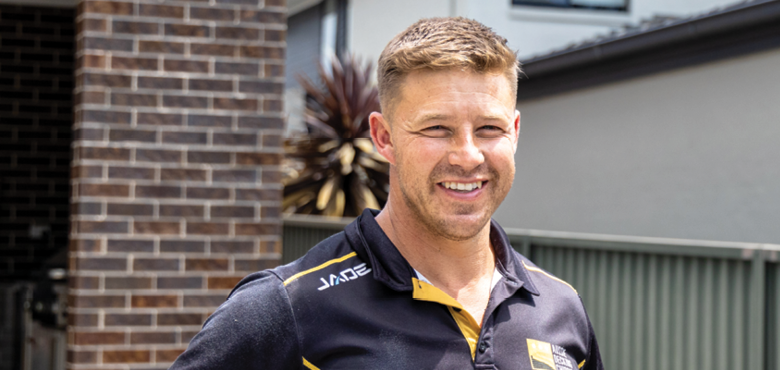Until the introduction of composite decking, the ability to include curved lines in deck design was limited. Times have now changed and curious chippies, such as Darren Brown of Aussie Decking Chippie, are mastering the fine art of composite deck bending with outstanding results.
Darren estimates that these days five per cent of his decking jobs involve curves, but this is only going to grow.
Before you start
- Don’t put a curve in for the sake of it; maybe a soft corner will do
- The tighter the radius, the more difficult it is to get the perfect shape
- This is a two-person job as you need to work quickly
- Ensure you wear good-quality welding gloves
- Keep the hot board away from skin — it will burn but not stick
- Every composite board brand behaves differently
- Lastly, be patient, experiment and practice, and enjoy the results!
Equipment
- 2 x long silicone heat blankets
- 2 x pieces of ceiling insulation the length of the decking piece
- 2 x sets of welding gloves
- Control panel connected to thermostat to regulate the temperature
Steps
- Create a mould of the curve you want to create
- Take a piece of composite decking that is longer than
- the length you need
- Layer as follows: ceiling insulation, heat blanket, decking board upside down, heat blanket and top with ceiling insulation
- Heat top silicone blanket to approx. 90 degrees Celsius
- Heat bottom silicone blank to approx. 110 degrees Celsius
- Warm the core of the board up to 80-100 degrees. If it gets too hot there is a risk of blistering
- Heat for 30-45 minutes for a hard radius. Heat for 25-30 minutes for a soft radius
- When hot enough, work quickly to place in the mould — you have 10 seconds before it starts to become unworkable. Important: wear welding gloves when handling the board
- Stretch it out to remove any kinks — you have 30 seconds to do this
- Once moulded to the shape you want, cool it quickly using a water spray bottle
- Cut to size once cooled and seal ends with paint or glued filler piece as normal
- Fix into position If you make a mistake or are unhappy with the result, start again with a fresh board
General composite decking tips
- Understand that bending a composite decking board will void the manufacturer’s warranty
- All other boards should be installed to the manufacturer’s guidelines so they are covered by warranty
- Experiment with different brands as they all behave differently





